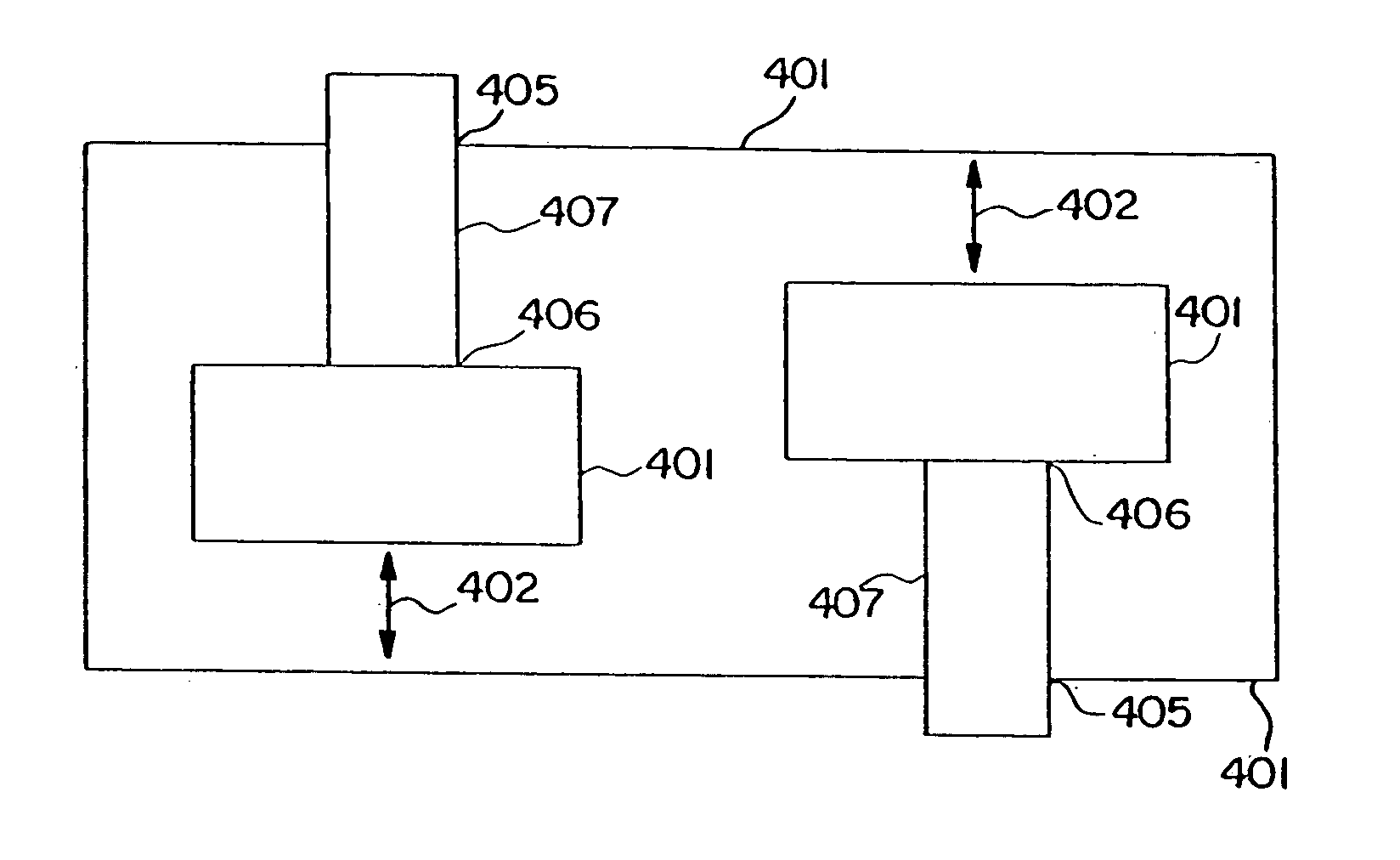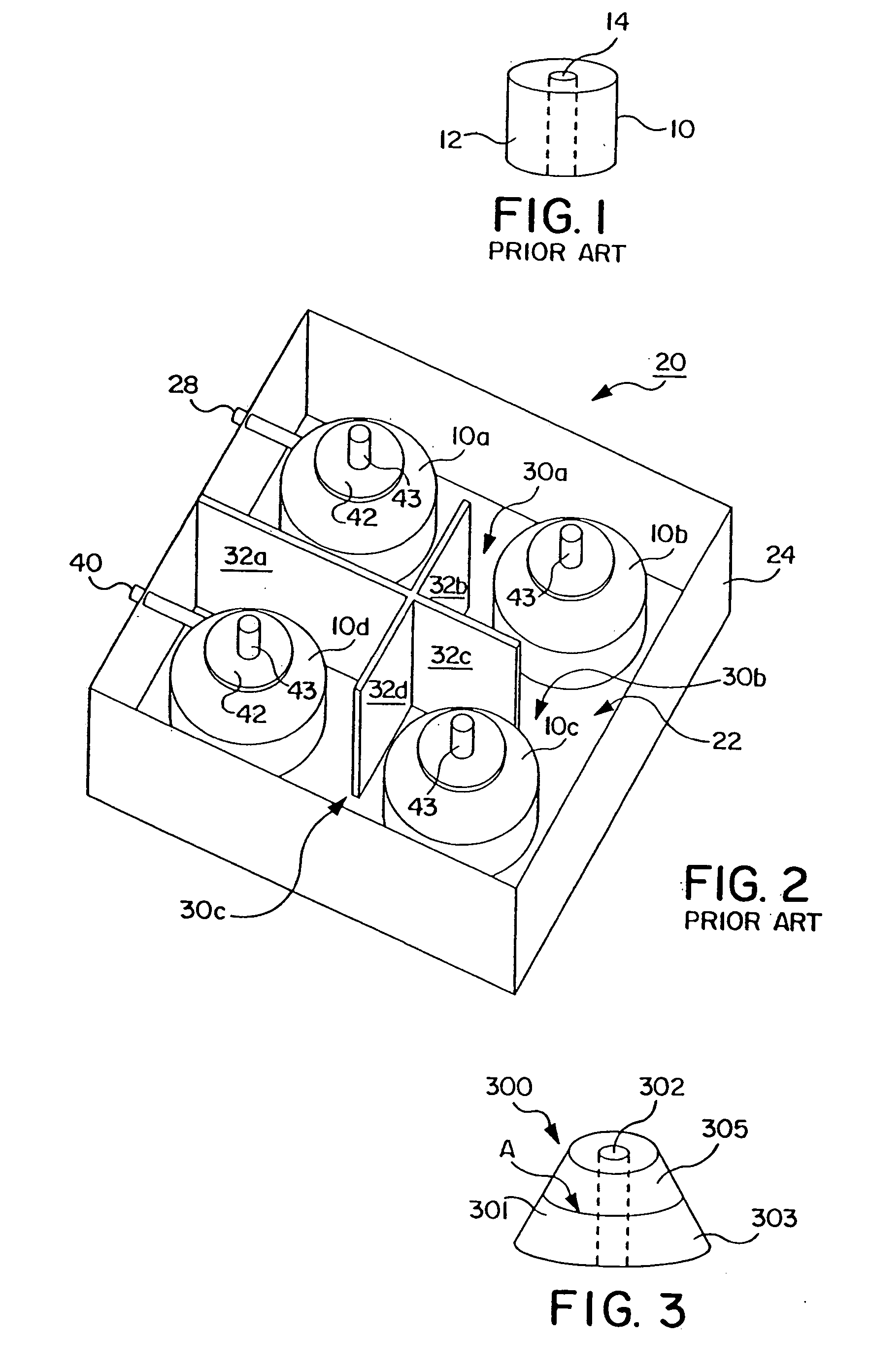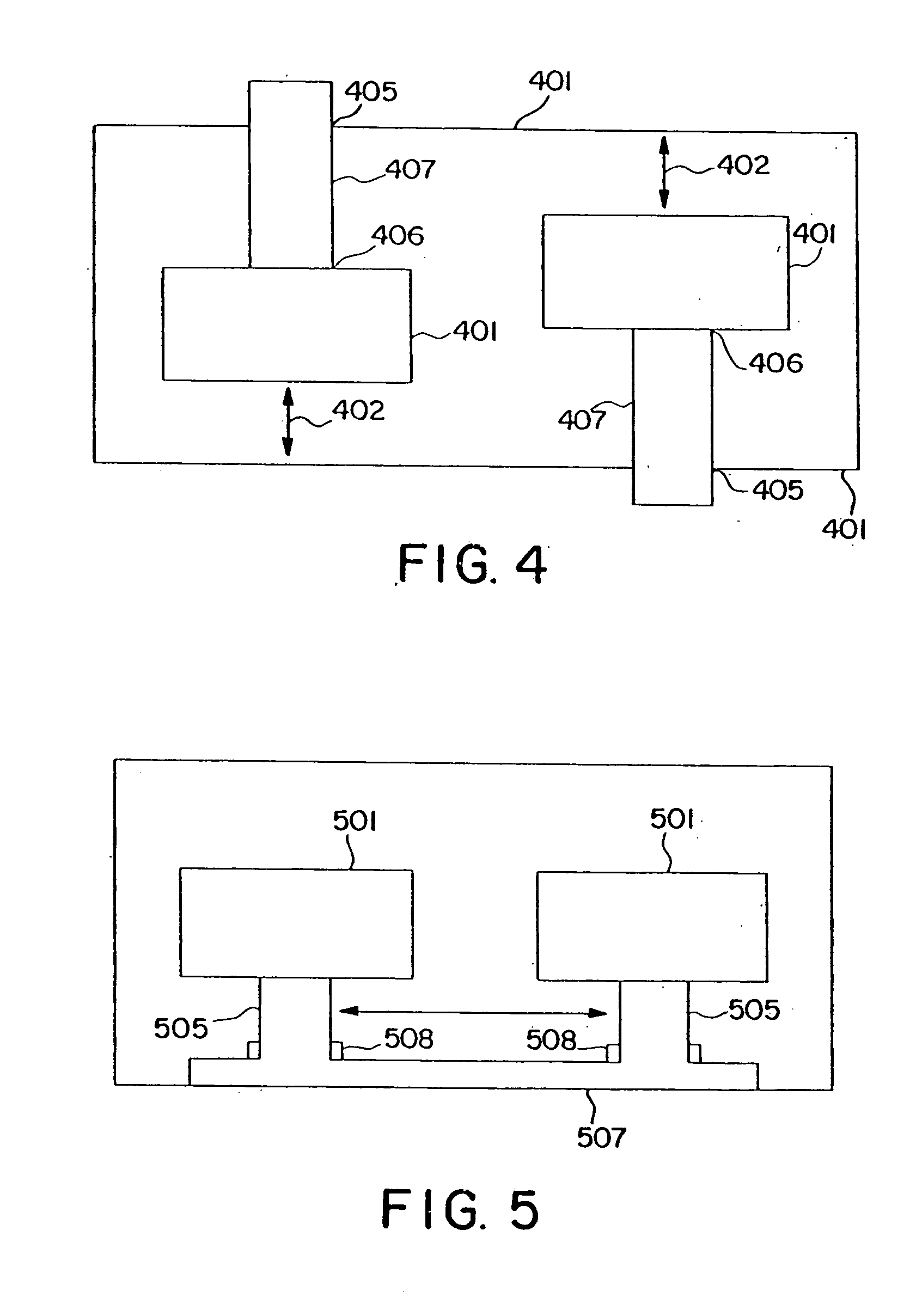Method and mechanism for tuning dielectric resonator circuits
a dielectric resonator and circuit technology, applied in the direction of bridges, scaffold accessories, building scaffolds, etc., can solve the problems of rare, if ever, use, tedious and laborious, and often consume weeks, so as to reduce the loss of insertion and improve the effect of q
- Summary
- Abstract
- Description
- Claims
- Application Information
AI Technical Summary
Benefits of technology
Problems solved by technology
Method used
Image
Examples
first embodiment
[0046]FIG. 4 illustrates the present invention. In this embodiment, the dielectric resonators that electromagnetically couple to each other are vertically adjustable relative to each other. In the context of this application, the term “vertically” refers to the dimension along the longitudinal axis of the dielectric resonators or, alternatively, the direction perpendicular to the lines of the TE mode. Thus, for instance, in FIG. 4, the dielectric resonators 401 are adjustable in the direction of the arrows 402. Many mechanisms could be used to provide the longitudinal adjustability that would be apparent to those of ordinary skill in this art. One particular mechanism would be to mount the dielectric resonator 401 on holding posts, and preferably screws 407, which are screwed into threaded holes 405 in walls 401 of the enclosure. Alternately, the holes 405 can be blind holes. The resonators 403 also may be adjustably mounted on the screws 407. Particularly, the longitudinal central ...
second embodiment
[0051]FIG. 5 illustrates the invention in which the resonators are horizontally adjustable relative to each other. Horizontal adjustability can be provided by any reasonable means. FIG. 5 illustrates embodiment in which the resonators 501 are mounted on posts 505 which, in turn, are mounted on a resonator holder 507. The holder may include one or more slots within which the posts 505 are engaged. The posts may mate with the slots with a frictional fit. Alternatively, the bottoms of the support posts may have radial gears which form a gear assembly with mating gears in the slot. Even more simply, the bottoms of the posts 505 may be threaded and held tightly to the slots by nuts and / or lock washers 508 that can be selectively tightened. When loosened, the posts 505 can move within the slots. When tightened, they become fixed within the slots. Any other reasonable mechanical connection mechanism that allows the posts to slide horizontally and, preferably, then locked in position would ...
PUM
 Login to View More
Login to View More Abstract
Description
Claims
Application Information
 Login to View More
Login to View More - R&D
- Intellectual Property
- Life Sciences
- Materials
- Tech Scout
- Unparalleled Data Quality
- Higher Quality Content
- 60% Fewer Hallucinations
Browse by: Latest US Patents, China's latest patents, Technical Efficacy Thesaurus, Application Domain, Technology Topic, Popular Technical Reports.
© 2025 PatSnap. All rights reserved.Legal|Privacy policy|Modern Slavery Act Transparency Statement|Sitemap|About US| Contact US: help@patsnap.com



